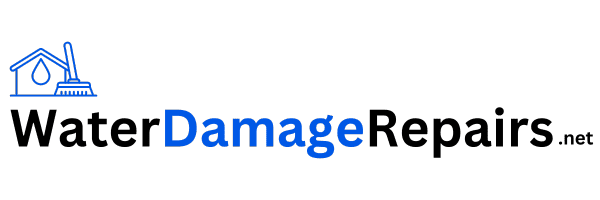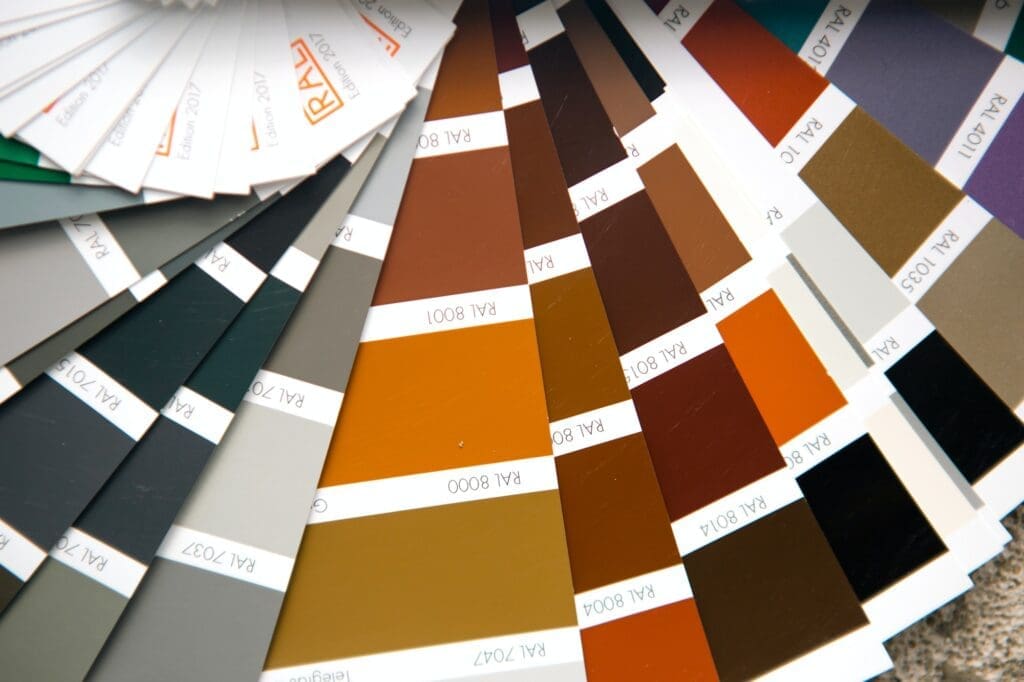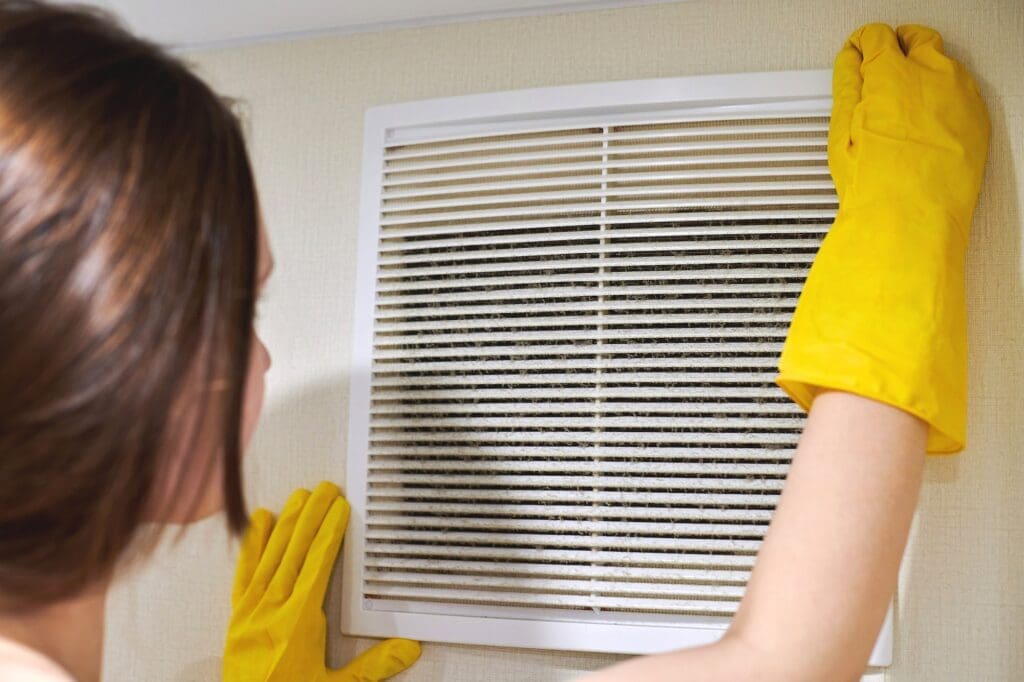The Ripple Effect Of Water Damage: How It Affects Your Home And Health
I’ve seen it time and time again in my years as a home restoration and safety expert: the consequences of water damage don’t stop at the physical damage to your home. In fact, they ripple outwards, affecting not only the structure of your beloved sanctuary but also impacting your health – both physically and mentally.
As someone who’s dedicated their life to helping people restore their homes and lives after disasters, I know how important it is for you to understand just how far-reaching these effects can be. You might think that once the visible signs of water damage have been dealt with, everything will return to normal. Unfortunately, this is often far from the case.
The lingering aftermath of water intrusion can lead to mold growth, compromised structural integrity, and even respiratory issues for those living within affected walls. In order to help you protect yourself and your loved ones from these potentially devastating consequences, let me walk you through what exactly happens when water damage occurs and provide some practical advice on how to mitigate its impact on your home and well-being.
Understanding Water Damage
You know the old saying, ‘a stitch in time saves nine?’ Well, that adage holds true when it comes to understanding water damage in your home.
Water damage can occur due to a myriad of reasons such as heavy rainfall, burst pipes, or even just high humidity levels. The key to mitigating the ripple effect of water damage on your home and health is early detection and effective moisture control. This involves using advanced drying techniques and professional equipment to ensure excess moisture is removed from your home before it starts causing problems.
As a home restoration and safety expert, I cannot stress enough how important it is for you to be proactive about keeping an eye out for signs of water damage. Doing so will not only help maintain the structural integrity of your property but also protect you and your loved ones from potential health hazards associated with mold growth and other contaminants.
Remember, being vigilant about moisture control will go a long way towards preserving the beauty and stability of your beloved abode while safeguarding everyone’s well-being inside it.
Now that we’ve covered the basics of understanding water damage, let’s dive deeper into its effects on structural integrity and how it could impact our lives if left unchecked.
The Effects On Structural Integrity
Now that we have a better grasp of water damage, it’s time to delve into its effects on your home’s structural integrity. As a home restoration and safety expert, I cannot stress enough the importance of addressing these issues promptly.
When left unattended, water damage can lead to costly structural repairs or even compromise the overall stability of your home. But fret not! By taking swift action and following proper safety precautions, you can ensure the well-being of both your home and loved ones.
The longer water sits in contact with materials like wood, drywall, or insulation, the more severe the deterioration becomes. This weakens critical components such as floor joists, load-bearing walls, and ceiling supports – all vital elements holding up your house!
To make matters worse (and potentially hazardous), compromised structures may also attract mold growth. Before diving into our next section about mold growth and prevention strategies, I want to remind you: always prioritize safety when dealing with water-damaged homes; never risk personal injury for short-term savings.
Remember that by serving others through compassionate care of their property during times of distress, we create lasting bonds within our community.
Mold Growth
Identifying mold growth in your home is key to keeping your family safe and healthy. That’s why I recommend having a professional inspect your home for signs of water damage, as this is the root cause of mold growth. Remediating mold growth can be a complicated process, so it’s important to work with a certified mold removal specialist who can develop a strategy that works for your home and budget. The health risks associated with mold growth should never be taken lightly, as exposure to mold can cause serious respiratory and allergy issues.
Mold Identification
You know that feeling when you step into a room and there’s just something off about the air, like it’s heavy?
Chances are you might be dealing with mold growth. As a home restoration and safety expert, I’ve seen firsthand how important proper dampness detection and mildew removal can be in keeping your home healthy and safe for everyone living there.
Mold comes in various types – some more harmful than others – so identifying what kind of mold is lurking behind those walls or under the floors becomes crucial to determine the best course of action to remove it effectively.
When we join forces to tackle mold issues, not only do we make our own homes better, but we also contribute positively to creating healthier communities around us.
So let’s work together in identifying and eliminating any unwanted fungal guests from our homes!
Remediation Strategies
Now that we’ve addressed the importance of detecting and identifying mold growth, let’s dive into some effective remediation strategies.
As a home restoration and safety expert, I can assure you that taking prompt action is key to minimizing any potential health risks or structural damages caused by mold.
But don’t worry – I’m here to help guide you through this process!
By working together, not only do we protect our own homes but also serve others in our community by sharing valuable knowledge on how to combat mold issues.
When considering remediation options, keep in mind that financial costs may vary depending on the severity of the infestation and your insurance policies’ coverage for such situations.
So make sure to explore all available solutions before deciding which one fits best with your specific needs and budget constraints.
Remember, when it comes to tackling mold growth, there’s no time like the present to take action and create a healthier living environment for everyone involved!
Health Risks
Now that we’ve explored some effective remediation strategies, it’s crucial to address the potential health risks associated with mold growth.
As your trusted home restoration and safety expert, I’m here to help you understand these dangers so you can take proper precautions for yourself and those around you.
Exposure to mold spores can lead to a variety of health issues, particularly when it comes to chemical exposure and respiratory problems.
In fact, many individuals may experience allergic reactions or even more severe conditions like asthma exacerbation due to prolonged contact with mold-infested environments.
By recognizing these risks, not only do we protect our own wellbeing but also contribute towards creating healthier living spaces for others in our community.
So let’s continue working together and strive to eliminate any chances of encountering such hazards within our homes!
Humidity And Air Quality
As a home restoration and safety expert, I can’t stress enough the importance of maintaining proper humidity levels and air quality in your home after water damage.
Excess moisture not only weakens the structural integrity of your house but also creates an ideal environment for mold growth – which is something you definitely don’t want! That’s why damp proofing and air sealing are crucial steps in fixing any water-related issues at home.
It’s essential to monitor indoor humidity levels closely (aiming for around 30-50% relative humidity) and invest in measures like dehumidifiers or improving ventilation. By doing so, you’ll be creating a healthier living environment while simultaneously helping those who may need it most by preventing potential health risks associated with dampness and poor air quality.
Now that we’ve discussed the impact on our homes, let’s dive into how these factors can affect our personal health next.
Health Risks
Ah, yes! We’ve all been there – that moment when you’re enjoying a hot cup of tea in your cozy living room and suddenly notice mold dancing on the walls like some twisted modern art exhibit.
Well, unfortunately for us (and our immune systems), this artistic expression has some sinister consequences. Inhaling or coming into contact with allergen exposure such as mold spores can lead to a plethora of health problems including allergies, asthma attacks, and other respiratory issues.
In addition to these airborne threats, water damage also invites unwanted guests like bacteria and viruses into our homes. These uninvited party crashers increase the risk of waterborne illnesses which could range from mild gastrointestinal discomfort to life-threatening infections.
So while we may have initially thought ‘Hey, free wall art!’, it’s clear that ignoring water damage puts both ourselves and those around us at serious risk. But wait! The plot thickens even further as another villain enters the scene: electrical hazards caused by water intrusion.
Can our heroic homeowners prevail? Stay tuned…
Electrical Hazards
You know, folks often overlook the electrical hazards that come with water damage.
As a home restoration and safety expert, I’ve seen firsthand how these dangers can impact your family’s well-being.
When you experience flooding or any form of water intrusion in your home, it’s important to consider the potential risk to your electrical system.
Water can weaken electrical insulation, putting you at risk for short circuits and even electrocution.
Now let me tell ya, proper water proofing is one way to prevent such incidents from happening.
By sealing off vulnerable areas like basements and crawl spaces, you’re not only protecting your prized possessions but also safeguarding the health and safety of those around you.
It’s truly amazing how much good we can do when we take action together!
And speaking of taking action, there are several preventative measures available that’ll help keep both your property and loved ones safe from harm caused by water damage…
Preventative Measures
Now that we’ve covered the many ways water damage can affect your home and health, let’s talk about some preventative measures you can take to avoid these issues.
One of the most effective methods is waterproofing your basement or crawl space. By applying a high-quality sealant to walls, floors, and any cracks or crevices, you’ll be creating an impermeable barrier that keeps moisture out.
Additionally, investing in proper drainage systems around your property will help divert water away from your foundation. And don’t forget about regular leak detection; checking for signs of leaks in pipes, appliances, and roofing materials can save you time, money, and stress by catching problems early.
But what if you’re already dealing with the aftermath of water damage? Don’t worry – there are still steps you can take to restore your home and protect your family’s health.
First things first: reach out to professionals who specialize in water damage restoration services to assess the situation and develop a plan for cleanup and repairs. In tandem with their efforts, consider implementing air purifiers or dehumidifiers throughout affected areas as they work wonders in reducing mold spores and promoting better indoor air quality.
Remember that helping others starts at home – taking care of yourself ensures you have the capacity to serve those around you best.
As we move forward together on this journey towards regaining control over our living spaces after water damage events…
Assessing Damage After The Fact
Identifying Sources of water damage is an important first step when assessing the damage after the fact. It’s important to determine whether it’s coming from a leaky pipe, a broken appliance, or a natural disaster.
Health risks associated with water damage can include mold growth, chemical contamination, and the release of harmful particles into the air. It’s important to take the necessary precautions to clean up the damage and make sure your home is safe and healthy.
Identifying Sources
I can’t stress enough how crucial it is to identify the sources of water damage in your home as soon as possible.
As a home restoration and safety expert, I’ve seen firsthand the devastating ripple effects that unchecked water damage can have on not only your property but also on your health.
You might think you’re just being diligent by having flood insurance, but trust me, prevention is always better than cure!
One practical tip I recommend is installing water sensors throughout your home – these little devices will alert you if there’s any unexpected moisture, allowing you to take action before things get out of hand.
Remember, when it comes to protecting your family and serving others from a place of strength, it all starts with taking care of our own homes first.
So let’s nip those pesky leaks in the bud before they turn into something much bigger!
Health Risks
Now that we’ve talked about the importance of addressing water damage as soon as possible, let’s delve into some of the potential health risks associated with it.
As a home restoration and safety expert, I can’t stress enough how crucial it is to prioritize your family’s well-being while also fulfilling that subconscious desire to serve others.
Allergen exposure and chemical contamination are two major concerns when dealing with water damage – mold growth and other allergens can aggravate respiratory issues, while chemicals from damaged household products may contaminate surrounding areas.
By taking swift action in assessing and repairing any damages, you’ll be ensuring not only a safe space for your loved ones but also setting an example for those around you on the importance of diligent home care!
Professional Restoration Services
Now that we’ve discussed the ripple effect of water damage on your home and health, it’s important to address how professional restoration services can help.
When you’re dealing with water damage, it may be tempting to save some money by attempting a DIY cleanup; however, this might not always be the best option for your safety or your wallet in the long run.
Restoration costs can vary depending on the extent of damage and type of service required, but investing in professionals will ensure thorough work and minimize future issues from arising. Plus, these experts have access to advanced equipment maintenance programs that guarantee their tools are functioning at their prime—leaving no room for error during the restoration process.
One reason why hiring professionals is worth every penny lies in their expertise when it comes to navigating complex insurance claims processes. These pros know exactly what documentation needs to be provided so you won’t miss out on any coverage opportunities—a huge relief during an already stressful time!
Moreover, they’ll perform necessary repairs while adhering strictly to industry standards as well as local building codes ensuring your home remains structurally sound once completed. With all these benefits considered, turning to an expert team for assistance makes perfect sense—especially knowing how much you value serving others and keeping them safe too.
Next up: let’s explore how water damage affects mental health aspects and ways we can mitigate those impacts without skipping a beat.
Mental Health Impacts
As a home restoration and safety expert, I can’t stress enough how vital it is to consider the mental health impacts of water damage.
It’s not just about the physical destruction; emotional trauma also plays a significant role in the aftermath.
When our homes are damaged by water, we often feel an overwhelming sense of helplessness and despair as we watch our cherished belongings become ruined.
This experience can lead to increased anxiety levels or even trigger anxiety disorders in some individuals.
It’s essential that you take care of your own mental well-being during these challenging times.
Reach out for support from family members, friends, or professional therapists if needed – don’t hesitate to ask for help!
Remember that taking care of yourself emotionally is crucial for serving others effectively – so be sure to prioritize self-care while navigating through water damage repair and recovery process.
Frequently Asked Questions
What Are The Potential Long-Term Financial Impacts Of Water Damage On A Home’s Value If Not Properly Addressed?
I cannot stress enough how crucial it is to address water damage in your home, as ignoring it can lead to catastrophic financial impacts on your property’s value.
As a home restoration and safety expert, I’ve witnessed countless homeowners experience this nightmare simply because they didn’t prioritize proper waterproofing and mold prevention measures.
When you invest in these essential steps, not only are you protecting the structural integrity of your beloved home, but you’re also serving others by providing a safe and healthy living environment for your family and potential future buyers.
Don’t let water damage silently eat away at the heart (and wallet) of your household – take action now to safeguard your investment and maintain that priceless peace of mind!
Can Water Damage Lead To Pest Infestations In The Home, And If So, How Can This Be Prevented?
Yes, water damage can definitely lead to pest infestations in your home.
When we don’t address moisture issues promptly, it creates the perfect environment for pests like rodents and insects to thrive.
These little invaders not only cause structural damage but also bring along hazards such as bacteria and viruses that could pose serious health risks to you and your family.
To prevent these unwanted guests from setting up shop in your home, it’s crucial to maintain good air quality by addressing any water leaks or dampness immediately – this will also aid in mold prevention.
Remember, a healthy living space is essential for all of us who are passionate about serving others; so let’s do our part in keeping our homes safe and free from potential dangers!
How Does Water Damage Affect Various Types Of Flooring Materials (E.G., Hardwood, Carpet, Tile) And What Are The Best Practices For Addressing Damage To Each Type Of Flooring?
It’s amazing how water damage can have such a diverse impact on different flooring materials, but fear not – we’ve got your back with the best practices to address each type.
For hardwood floors, preventative measures like using moisture barriers and promptly addressing spills are key; however, if they do get damaged, sanding and refinishing can often restore their original beauty.
Carpeted areas need immediate attention when wet: extracting excess water, utilizing fans for air circulation, and dehumidifiers for moisture control will help prevent mold growth and protect the integrity of the carpet fibers.
As for tiled surfaces, while they may appear more resilient to water damage due to their non-porous nature, don’t overlook the importance of maintaining grout lines and sealing them regularly to avoid hidden problems beneath those shiny tiles!
No matter which type of floor you’re dealing with, being proactive in maintenance and quick to respond after incidents is essential for preserving both your home’s value and health.
Are There Any Insurance Implications For Homeowners Who Fail To Promptly Address Water Damage Or Who Do Not Follow Recommended Restoration Procedures?
As a home restoration and safety expert, I can’t stress enough the importance of promptly addressing water damage to protect both your home’s value and your family’s health.
Failing to do so or not following recommended restoration procedures could lead to insurance implications that you’ll want to avoid. When it comes to insurance coverage, many policies require homeowners to take immediate action in mitigating damages after discovering an issue.
If you don’t act quickly, you may jeopardize your claims process, potentially resulting in denied or reduced payouts for repairs. To better serve yourself and others who rely on your responsible decision-making, always follow best practices when dealing with water damage – this will help ensure a smooth claims experience while also preserving the integrity of your home and safeguarding the wellbeing of those living there.
How Can Homeowners Determine Whether Their Home’s Water Damage Is A Result Of A One-Time Event (E.G., A Burst Pipe) Versus An Ongoing Issue (E.G., A Slow Leak, Poor Drainage)?
Untangling the mystery of water damage in your home can feel like searching for a needle in a haystack, but fear not! As a home restoration and safety expert, I’m here to help you differentiate between one-time events and ongoing issues.
First and foremost, keep an eye on moisture control and mold prevention as these are key indicators of underlying problems. If you notice recurring damp spots or musty odors even after addressing the initial cause, it’s likely that you’re dealing with an ongoing issue such as poor drainage or slow leaks.
By staying vigilant and taking prompt action against any signs of water intrusion, you’ll be doing your part to protect both your home and the well-being of those who dwell within its walls.
Conclusion
In conclusion, water damage in your home can be compared to the effects of a small stone thrown into a pond. At first glance, it may seem like a trivial issue; however, as time passes and the ripples spread outward, the negative impacts on both your property and health become more significant.
Just as we cannot ignore the ripple effect from that tiny stone, homeowners must address water damage promptly and properly to avoid long-term consequences. As a seasoned home restoration expert, I’ve seen firsthand how failing to tackle water issues leads not only to reduced property value but also to potential pest infestations and extensive damage to various flooring materials.
Moreover, neglecting proper procedures can result in insurance complications for homeowners. To prevent these undesirable outcomes, always remember that awareness is key – whether you’re dealing with a one-time event or an ongoing problem.
Take charge of your living space by keeping an eye out for signs of water-related trouble spots and addressing them proactively. This way, you’ll ensure a healthy environment inside your sacred haven while protecting its structural integrity and market value. Don’t let the ripple effect of water damage engulf your home; instead, embrace preventative measures so you won’t have any regrets when facing future challenges head-on.



